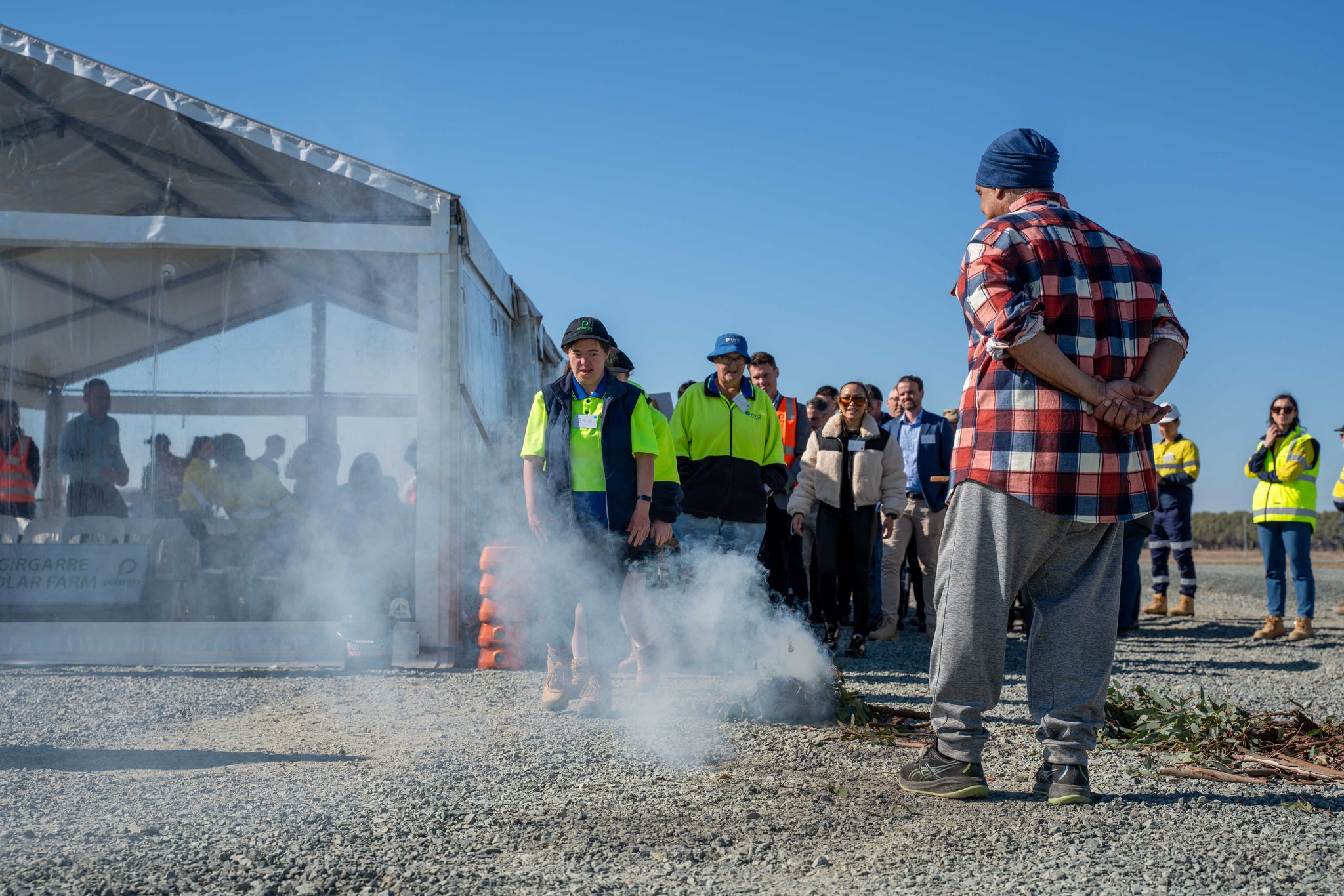Australia has some of the world’s best wind and solar resources, thanks to vast stretches of remote territory and a favourable climate. Today, overseas investors are helping turn these resources into clean energy, bringing capital, technology and skills.
One company with a distinctive approach is Potentia Energy. The Sydney-headquartered company is 50% owned by Italy’s Enel Green Power and brings superb social licence skills to project development. This helps build local support for large-scale, clean energy infrastructure.
‘To be successful, you need to engage with communities and bring real, tangible benefits that are tailored to local needs,’ says Sunny Rutherford, Head of Communications and External Affairs, Potentia Energy.
‘Enel Green Power is active in more than 20 markets around the world: we draw on that legacy and develop a unique Australian approach.’
A joint venture with Italian heritage
Enel Green Power entered the Australian energy market in 2017 when it acquired the 275 MW Bungala Solar Farm in South Australia. At the time, this was one of the largest solar farms in Australia.
In July 2023, Japan’s INPEX acquired a 50% stake and established Potentia Energy as a joint venture. Since then, the renewables company has embarked on rapid growth in Australia via acquisitions and project development.
‘We currently have 9 operating assets and around 900 MW of clean generation,’ says Rutherford. ‘These include wind and solar projects across Australia. We have several more projects in construction, and 9 GW in our development pipeline.’
Commitment to community support
One way that Potentia Energy stands out is its approach to social licence.
‘The global clean energy industry is grappling with the challenge of how to gain community support,’ says Rutherford. ‘But the core challenge is that every community is unique.’
Potentia Energy draws on social licence methodologies developed by Enel Green Power in its global operations. Then the company adapts its methodology to the local context.
‘We tailor our approach for each project,’ says Rutherford. ‘Australia’s Clean Energy Council has its set of best practices, and most of the state governments have established their own guidelines.
‘We build a tailored approach that meets the needs of a local community and aims to deliver targeted benefits.’

Potentia Energy worked closely with the local Girgarre Development Group to deliver the Girgarre Solar Farm in Victoria.
Involving the local community
The A$140 million Girgarre Solar Farm is a standout example of how this approach works.
Located 50 km west of Shepparton in Victoria, Girgarre includes 169,000 photovoltaic (PV) modules. The farm can generate 93 MW of electricity. This is sufficient to power more than 43,000 Victorian homes.
The farm began construction in 2023 and became operational in 2025.
‘We worked closely with the local Girgarre Development Group,’ says Rutherford. ‘They advocated for initiatives that would help grow the town. We were guided by them on how our approach to construction could add most value to the town.’
‘Right from the word “go”, it's been communication, communication, communication,’ says Jan Smith, Chair of the Girgarre Development Group.
The result was construction procurement that favoured local interests. For example, Potentia Energy involved local disability groups in the unpacking of supplies. The company also provided solar panels for a local school and installed EV charging stations in Girgarre.
Partnering with First Nations communities
The Girgarre solar project was an opportunity to work closely with First Nations communities.
‘We entered into a cultural agreement with the Yorta Yorta Nation Aboriginal Corporation for the duration of the project,’ says Rutherford.
According to Rutherford, the contractor, BEON, focused on First Nations engagement.
‘BEON did a really good job of finding development pathways,’ she says. ‘They used the short-term construction phase to build long-term opportunities for interested local First Nation job seekers.’
In 2025, Potentia Energy won a community engagement award from Australia’s Clean Energy Council. The award specifically cited “… benefit sharing and cultural respect”.
Watch a video produced by the Clean Energy Council on the partnership between Potentia Energy and the Girgarre community in Victoria to deliver a solar farm.
Abundant renewable energy investment opportunities
Australia’s energy transition creates opportunities for investors at all stages in the supply chain.
‘Australia is experiencing one of the world’s fastest energy transitions,’ says Sheralyn Derrick, Investment Director, Austrade. ‘Australia has abundant solar and wind resources to support the transition to clean energy and become a renewable energy superpower.
‘The government has reinforced Australia’s commitment with a target to reduce emissions by 62–70% below 2005 levels by 2035.’
‘Australia’s policy settings are key for us,’ says Rutherford. ‘We want to invest in a market that is stable and supportive of the energy transition – and that’s what Australia provides.’
Rutherford cites the Emeroo Battery Storage project, which gained rapid approval during 2025. This was the first such project to be granted environmental approval under new South Australian legislation for renewable energy projects.
‘The Australian Government has given a clear signal of its intentions with its target of generating 82% renewable electricity by 2030,’ she says. ‘Australia’s energy transition is accelerating, with abundant wind and solar resources.’
Subscribe to the Investment Update newsletter
Find out about new investment opportunities, insights and investor success stories across Australia.